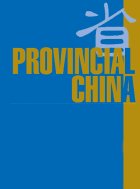| SMHRIC |
| May 6, 2018 |
| New York |
[See below for video footage on China's recent crackdown on livestock grazing]
|
|
|
| Chinese Livestock Grazing Ban SWAT Team confiscating Mongolian herders livestock during the recent region-wide crackdown on livestock grazing in Southern Mongolia (SMHRIC - 20180416) |
As China tightens the livestock grazing ban in Southern Mongolian pastoralist areas, herders from all parts of Southern Mongolia have staged a region-wide protest via Chinese social media. To collect signatures from fellow herders, the protest letter outlined the root cause of environmental degradation and urged the Chinese Government to immediately halt the livestock grazing ban. The following is an English translation of the original letter written in Mongolian:
To the People’s Government of the Inner Mongolia Autonomous Region and the Inner Mongolia Autonomous Region Agriculture and Animal Husbandry Bureau:
We demand the immediate halt of a series of erroneous policies, including the livestock grazing ban, brute restriction on livestock headcounts, and the forcible fencing of livestock, adopted and implemented in the Inner Mongolia Autonomous Region over the past two decades under the pretext of a recovering eco-system by the Chinese Communist Party’s Central Committee of the People’s Republic of China. These policies are extremely erroneous and disastrous due to their lack of factual and practical grounds. Particularly, the livestock grazing ban and fencing of livestock must be halted immediately, as pastoralism is still the most suitable path for the development of the rural economy in our region.
In our opinion, the so-called “recovering grassland eco-system by enforcing livestock grazing ban” has not only failed to achieve the government’s set goal but has also increased government expenditure, doubled the herders’ burden, and pushed the herders to the edge of extreme poverty. In this sense, this is counterproductive and inconsistent with the government’s rhetoric of poverty alleviation and building an affluent society.
In fact, nothing seems more nonsensical than claiming to recover the grassland eco-system by banning livestock grazing for a month or two. Neither the environment nor society benefits from these absurd policies. It is more egregious that the government subsidy for the livestock grazing ban does not even suffice to purchase fodder for three days.
As a livestock grazing ban is by no means a solution to the recovery of the Southern Mongolian grasslands, let us outline the root causes of the devastation to the Southern Mongolian natural environment:
1. State-sponsored, large-scale Chinese immigration to indigenous Mongolian territories.
2. Unregulated large-scale mining practices, depletion of underground water, and the pollution of air and water are leading to total destruction of Southern Mongolian natural environments and threaten the very existence of human and animals; examples of these extractive industries include the Huuliin-gol Coal Mine, Shiilin-gol Coal Mine, Manglai Coal Mine of Left Sunid Banner, Right Uzumchin Banner Coal Mine, and North-China Petro.
3. Large-scale agricultural practices by the Chinese even though Southern Mongolia is not suitable for farming due to its extremely thin top soil and lack of precipitation.
4. In the past two decades, corruption and abuse of power have gone from bad to worse within the Chinese Communist Party and the Chinese Government. Special interest groups have formed among Chinese government officials and corporations. An example of government officials and tourist industries serving their own interests is demonstrated by many tourist companies obtaining tacit approval from the local government to disperse clouds in an effort to stop the rain and have a blue sky, which further deteriorated grasslands that desperately needed rainfall. This created further tension between the herders and the government.
5. Large-scale solar energy and wind power farms set up on grassland not only occupied large tracts of grazing land, but also brought noise and pollution to the pastoralist communities.
6. Despite extremely scarce water resources, the government continues to migrate influxes of Chinese peasants to control and cut water sources to feed a larger Chinese population.
7. Toxic industries have been introduced into Southern Mongolian grasslands. For example, the Zaruud Banner Alumina Factory, Ordos Natural Gas Refinery, Bayannuur Oo-Bulag Heavy Metal Industry, Ongniud Banner Pig Farm, and Hulun-boir Barag Grassland Open-up Project.
8. In Southern Mongolia, decision makers [the Chinese] do not have any knowledge of the pastoralist economy and pastoralist way of life, which certainly leads to the formulation of negative and hostile policies toward Mongolian pastoralism.
These are the true root causes of not only the environmental degradation, pollution, and desertification in Southern Mongolia but also the poverty and marginalization of indigenous Mongolian herders.
As the millennia-old traditional economy, pastoralism has played a critical role in maintaining the delicate balance between man and nature on the Mongolian Plateau. Extractive industries have no qualification whatsoever to replace this most sustainable and resourceful economy – pastoralism in Southern Mongolia.
Therefore, the Mongolian herders, who are the true custodians of the pastoralist economy, are the rightful stakeholders who should decide the future of the development of pastoralism.
These opinions are from our herders to the Chinese Communist Party and the People’s Government. We urge the relevant authorities to take prompt action to formulate a just policy to guarantee harmony between humans and nature while safeguarding the livelihood of the native inhabitants of Southern Mongolia. We urge the authorities not to mobilize any paramilitary and armed police to crackdown on us for bringing our grievances to the attention of the government.





 Beyond
Great Walls: Environment, Identity, and Development on the Chinese
Grasslands of Inner Mongolia
Beyond
Great Walls: Environment, Identity, and Development on the Chinese
Grasslands of Inner Mongolia China's
Pastoral Region: Sheep and Wool, Minority Nationalities, Rangeland
Degradation and Sustainable Development
China's
Pastoral Region: Sheep and Wool, Minority Nationalities, Rangeland
Degradation and Sustainable Development The
Ordos Plateau of China: An Endangered Environment (Unu Studies on
Critical Environmental Regions)
The
Ordos Plateau of China: An Endangered Environment (Unu Studies on
Critical Environmental Regions)